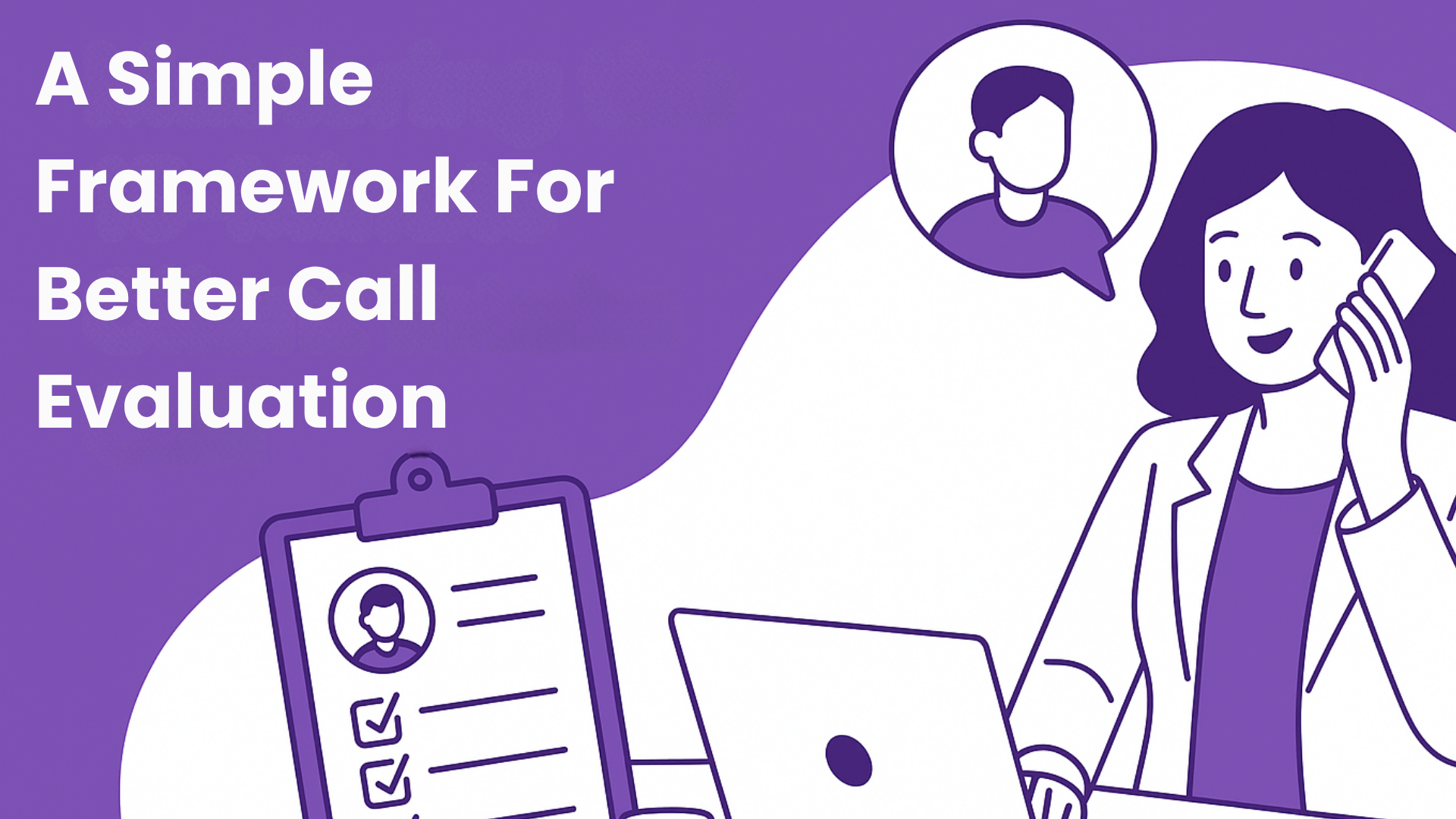A Simple Framework for Better Call Evaluation
-
Kehinde Fatosa
- 10 min read

If you’ve ever finished a client call or a team discussion thinking, “Wait, what did we actually learn?”, you’re not alone. This happens more often than you realize. Calls can feel full of energy, collaborative, and productive on the surface. Yet, when you step back, the key insights you expected to gain often remain unclear or vague. The conversation might have been busy, but real progress feels elusive.
Why is this? It’s simple: not every conversation uncovers the core challenges. Many discussions stay at a superficial level, covering a lot of ground but missing what truly matters. The hard truth is that without surfacing the real pain points, all the chatter doesn’t move the needle.
A 3 Step Evaluation Framework for Calls That Get to the Point
To move beyond noisy discussions and toward real insight, we recommend a simple, three step framework designed to keep you focused and effective.
1. Pinpoint the Core Challenge
Every call or interview has a central issue, the one problem causing the most tension, delay, or lost opportunity. Your job is to find it. This core challenge is your signal in the noise.
It’s not always immediately obvious. That’s okay. Keep digging by asking “why” repeatedly. For example, if the client says, “We’re struggling with customer retention,” ask, “Why?” If the answer is, “Because of product issues,” ask again, “Why do those product issues happen?” This iterative questioning uncovers the root cause rather than just the symptoms.
Finding the core challenge means you can focus your efforts where they’ll matter most, rather than chasing multiple side issues that drain time and energy.
2. Understand What’s Already Been Tried (and Why It Didn’t Work)
Clients and teams rarely face a problem without having attempted some solutions already. It’s crucial to understand what those solutions were and why they failed or fell short.
Why does this matter? Because people don’t want recycled advice or generic recommendations. They want clarity about what will actually work in their unique context.
By learning what’s been tried and digging into the gaps, you build credibility and context for your next move. You avoid suggesting things that have already failed. Instead, you identify new, targeted steps with a stronger chance of success.
This step also shows respect for your client’s efforts and deepens trust. It tells them you’re listening carefully, not just pitching ideas.
3. Clarify the Cost of Inaction
What happens if the core challenge is left unresolved? This is a vital question that often gets overlooked.
Is the problem causing budget losses? Increased customer churn? Frustrated employees? Missed deadlines or stalled growth?
When you name the cost of inaction clearly, it helps everyone involved understand the stakes. This shared understanding drives prioritization and urgency.
Clients and teams are more motivated to act when they grasp what’s at risk. It also helps decision makers justify investments and resource allocation because the cost of delay is quantified.
Why This Framework Matters More Than Ever
Teams today are overwhelmed. Feedback streams in from multiple channels: interviews, surveys, calls, transcripts, and countless opinions. Yet few have a consistent, repeatable way to evaluate all this qualitative data at scale.
Without a clear method, teams struggle to turn this flood of information into meaningful decisions. They either get stuck in analysis paralysis or make decisions based on gut feeling alone.
This 3 step evaluation framework is not just another meeting tactic. It’s a foundational approach to qualitative evaluation that accelerates understanding and prioritization.
By applying it, your team moves faster from scattered feedback to focused insights. You cut through the noise and uncover what really needs your attention.
How Insight7 Helps You Unlock Real Insights – Simply
At Insight7, we’re on a mission to help teams unlock insight without complexity. We’ve built tools and frameworks that empower you to evaluate conversations, interviews, and calls quickly and effectively.
You don’t need technical skills. Instead, you get a clear process and supportive technology to help you evaluate what matters and move forward with confidence.
The Bottom Line
If you’re tired of finishing calls feeling productive but empty handed insight wise, it’s time to change how you evaluate conversations.
Use this three step framework:
- Find the core challenge by asking “why” until you get to the root.
- Understand what’s been tried and why it didn’t work.
- Clarify the cost of not solving the problem.
This approach gives you a repeatable way to get meaningful insight from every call or interview. It helps your team focus on what matters and act faster.
Insight7 is here to support you on this journey, simplifying qualitative evaluation so you spend less time guessing and more time making smart decisions.
If you want to stop wasting time and start unlocking real insight, let’s talk. We’re building solutions designed for teams like yours.







